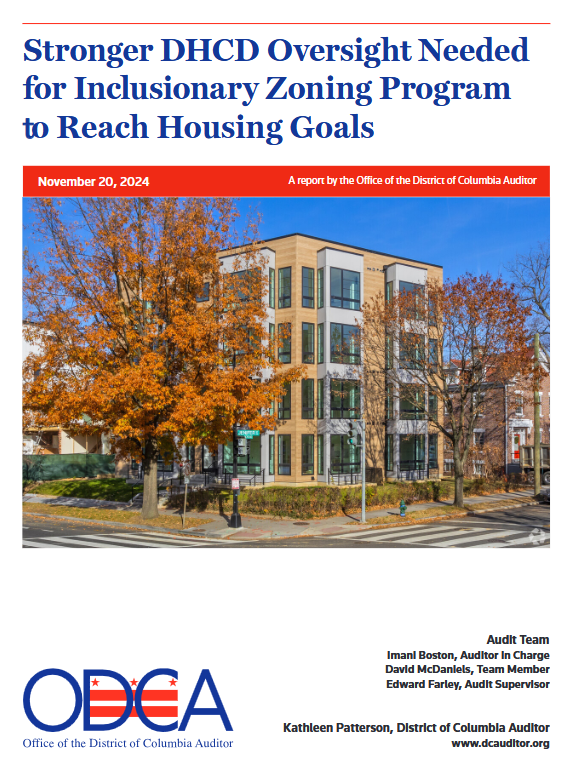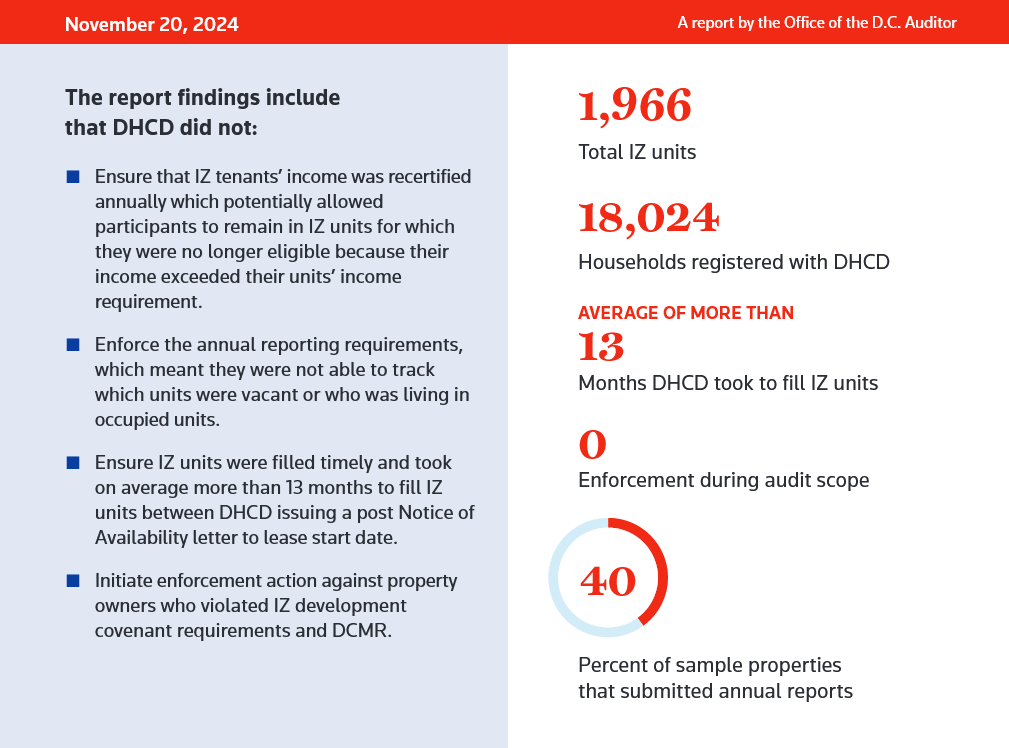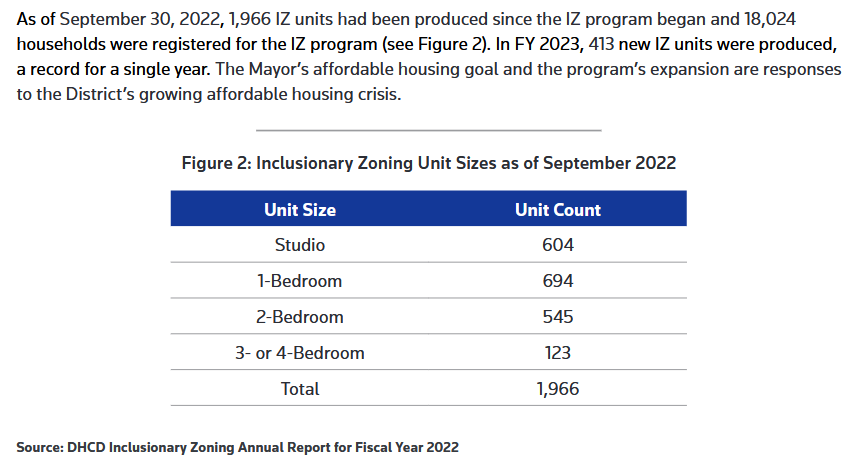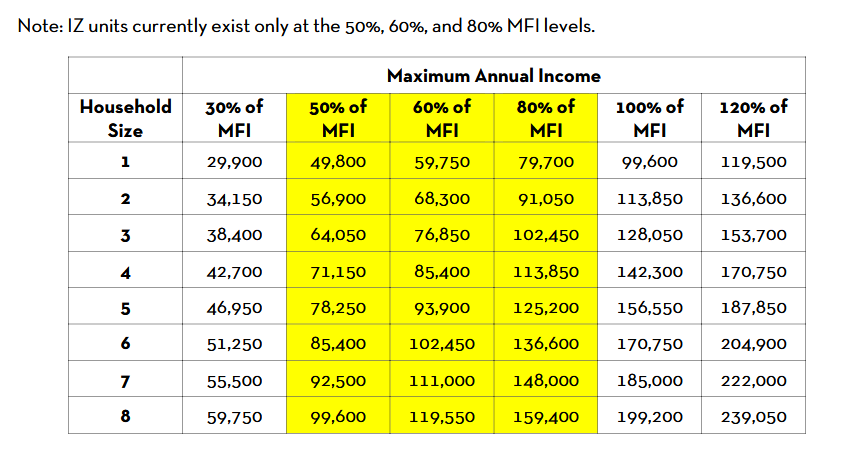

Auditor Report on IZ (“ARIZ”) highlights:
“The Inclusionary Zoning program is a key initiative identified by the Mayor as a pathway toward the afforda ble housing goal of producing 36,000 new housing units and 12,000 new affordable units by 2025.”

The Inclusionary Zoning (IZ) program in Washington, D.C., was enacted in 2006 and initiated through the DC Comprehensive Plan, which includes policies and actions that set priorities for the District’s land use, public services, infrastructure, and capital investments. A 2008 Mayor’s Order designated DHCD as the authority responsible for administering the IZ program. [The IZ program] became effective in 2009 and the first units came to the housing market in 2011. The regulations state that the IZ program was created to further the Housing Element of the Comprehensive Plan through increasing the amount and expanding the geographic distribution of adequate affordable housing available to current and future residents. … The purpose of the program is to reduce the upward impact that market-rate development can have through increased affordable unit production with the goal of ultimately creating a full range of long-term housing choices for each District household regardless of size and income.
As of September 30, 2022, about 2,000 IZ units had been built. And, about 18,000 households were registered and waiting for an IZ unit.
ARIZ, Figure 2, at Page 3:
Shows that as of Sep. 2022, 65% of the IZ units were built for single-person and some two-person households (1,300 studio & 1-bedroom units had been built).

ARIZ, Page 5, 4th bullet-point:
Some of the current IZ participating households may be spending 50% of their income on housing costs (this is unlawfully not affordable).
IZ units sit vacant for an average of about 400 days, some units have sat vacant for 1000 days.
ARIZ at pages 14 – 16:
Since DHCD is not enforcing IZ annual reporting it's hard to track how many IZ units have been vacant or remain vacant since they were built. “Without annual reports, DHCD is unaware of the number of vacant (IZ) units” (at page 16).
ARIZ, pp 17-18:
DHCD did not initiate enforcement action against property owners who violated IZ development covenant requirements. “Despite properties’ non compliance with income recertification, lease renewal, and annual report requirements, DHCD did not initiate enforcement actions against any property owners” (p18).
IZ units serve households making “no more than 50%, 60%, or 80% of the MFI.” MFI stands for Median Family Income and is interchangable with AMI or the Area Median Income. And, according to the Mayor's Inclusionary Zoning Program 2022-2023 Maximum Income, Rent and Purchase Price Schedule, Effective July 1, 2022, figure at page 2, Single-household IZ registrants making $79,700 annually could qualify and live in an “affordable” IZ unit, and, a family of four making $113,850/yr could qualify for a 3-bedroom IZ unit.

- It's been reported that in Washington, DC, a family of four needs to make $275,000/yr to live “comfortably”.
- As reported by the United Planning Organization, 40,000 of the 44,000 DC households that are rent-burdened (i.e., paying over 30% of their income on housing costs) are extremely low-income, earning 30% AMI or less.
- According to DC Health Matters 2023 Demographics Data, the MFI for Ward One Black residents is $49,148/yr. An affordable rent (i.e., 30% of that MFI) is $14,744/year ($1,229/month).
####


Leave a Reply